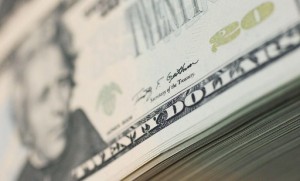
The country’s foreign exchange reserves hit another record high, partly fueled by the Bangko Sentral ng Pilipinas’ efforts to temper the peso’s appreciation by buying dollars. MARK WILSON/GETTY IMAGES/AFP
The country’s foreign exchange reserves hit another record high, partly fueled by the Bangko Sentral ng Pilipinas’ efforts to temper the peso’s appreciation by buying dollars.
The gross international reserves (GIR)—which determine a country’s ability to purchase imports, settle debts to foreigners, and engage in other transactions with the rest of the world—reached $85.76 billion as of the end of January, up by 11 percent from the $77.36 billion of the same period last year.
The BSP considered the latest GIR amount to be quite comfortable—enough to cover 12.3 months’ worth of import requirements.
Also, it was 5.8 times the amount of the outstanding debt denominated in foreign currencies of private and government entities maturing within the short term, the central bank said.
As a result, the international financial community’s confidence in the Philippines improved further because of the country’s clear ability to service its liabilities, BSP officials claimed.
“Inflows from the BSP’s foreign exchange operations and income from investments abroad, as well as foreign currency deposits by the national government, contributed to the appreciable increase in the end-January 2013 GIR level,” the BSP on Thursday said in a statement.
The central bank, through its foreign exchange operations, buys and sells currencies to stabilize the exchange rate, causing the country’s foreign exchange reserves to grow.
The BSP maintains a policy of letting the market determine the peso exchange rate. But it stressed that it would immediately intervene if the peso were to fluctuate sharply.
The sudden rise or fall of the local currency will adversely affect the economy, it explained. For instance, the appreciation of the peso will make Philippine-made goods more expensive, effectively reducing the competitiveness of the export sector.
In January, the peso averaged at 40.73 against the US dollar, stronger than the 41:$1 rate reported the previous month. Market players said that, had it not been for the BSP’s effort to stabilize the exchange rate, the peso would have risen more sharply.
Also, proceeds from the BSP’s investments provided a boost to the GIR. The central bank invests mainly in US Treasuries. The government’s foreign borrowings deposited in the BSP also beefed up the GIR for January.
The central bank’s gold holdings accounted for $10.3 billion of the country’s total reserves.